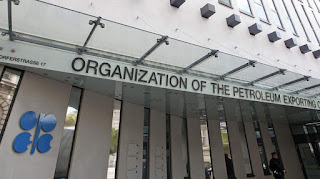Grand oil bargain is victim of Saudi Arabia's Iran fixation
DOHA, Qatar (Bloomberg) -- In the end, the outcome of Sunday’s summit of 16 oil ministers at Qatar’s Sheraton hotel turned on one country that wasn’t there.
Iran’s decision, on the eve of the meeting, not to attend signaled things wouldn’t go well. When ministers assembled the next day, Saudi Arabia stunned some of them by insisting every OPEC member, including Iran, must subscribe to the deal to freeze oil production. Scheduled to end with an early afternoon press conference, proceedings dragged into the evening. When the meeting finally broke up without a deal just after 9 p.m. local time, it fell to the host minister, Qatar’s Mohammed Al Sada, to announce the result at a press conference for the dozens of reporters who’d flown in to cover the talks.
“The inclusion of all OPEC members would definitely help in reaching an agreement,” he said, promising more consultation before the group’s June meeting.
The freeze deal, mooted in February as the first coordinated action between OPEC and non-OPEC producers for 15 years, had fallen victim to tensions between Saudi Arabia and its main regional rival Iran, a relationship soured by proxy conflicts from Syria to Yemen.
Taken Control
Mohammed bin Salman, the young Saudi deputy crown prince who’s taken control of economic policy in the world’s top oil producer, had publicly warned twice that no deal was possible without Iran’s participation. In turn, Iran insisted on its right to boost crude production to the level it pumped before it became subject to international sanctions.
Iran had no intention of voluntarily sanctioning itself, the nation’s deputy oil minister said on Saturday.
The government in Tehran had decided there was no point in turning up to Doha on Friday after Qatari officials contacted Iran to say only countries intending to sign up to the freeze should attend, according to a person with direct knowledge of the deliberations. Unable to meet those terms, Iran took that as a withdrawal of Qatar’s invitation and decided to stay away.
Still, ministers gathered on Saturday evening in a positive mood. There was no indication Saudi Arabia had any problems with a draft text committing attendees to keep production at January levels, according to one of the participants. Russian Energy Minister Alexander Novak, who’d spoken to his Saudi counterpart by phone earlier in the week, told reporters he was “optimistic” about a deal.
Meeting Delayed
The trouble started on Sunday morning.
Saudi Arabia’s Ali Al-Naimi, an octogenarian who’s been in the post for more than 20 years, insisted the draft agreement must include language that made the deal dependent on Iran’s eventual participation, participants said. The start of the meeting was delayed several hours while officials sought to agree the text.
“Discussions are at a very high level between the Saudis, Russians and Gulf countries,” over Iran’s output, Wilson Pastor, Ecuador’s governor to OPEC, said in a Bloomberg Television interview in Doha before the start of formal talks. “The general agreement is in place,” but there were some disagreements on the wording, he said.
Once the meeting proper got underway, the haggling continued. In the hotel’s gaudy gold-leafed ballroom, ministers huddled round a PC taking it in turns to try and find the key sentence everyone could agree upon, according a person inside the room, who asked to not identified because the deliberations were confidential.
No Deal
After hours of talks, the ministers couldn’t agree on a text that would satisfy Al-Naimi and the meeting broke up without a deal, hours before crude-oil futures started trading in Asia.
In an apparent reference to Saudi Arabia, Russia’s Novak said at a press conference after the talks that some countries changed their position right before the meeting after agreeing to an earlier draft.
“I thought countries that came here, came to agree and not to discuss the need of joining in of those countries that were not participating,” he said. “We had been disputing today a lot, and that was because some countries from OPEC changed their positions in the morning.”
Crude oil has rallied since the freeze was first proposed in February, with Brent crude up more than 45% since falling to a 12-year low in January. The global benchmark lost as much as 7% when markets opened Monday.
When OPEC’s November 2014 meeting in Vienna ended without an agreement to cut production to support falling prices, the decision was based on the economics of the oil market and was led by Al-Naimi, said Olivier Jakob, managing director of Zug, Switzerland-based consultant Petromatrix GmbH.
“The failure of the April 2016 Doha meeting was apparently more about politics and led by Mohammed bin Salman,” Jakob said. “The Saudi regime has become very unpredictable but that can be taken both as a bearish or a bullish risk factor.”
The deal’s demise will probably do little to alter supply-demand fundamentals as producers committed to a freeze including Russia and Iraq were already producing at record levels. But it’s left a coordinated response to the slump in ruins, and that will send an important message to the market: it’s every country for itself again.


































